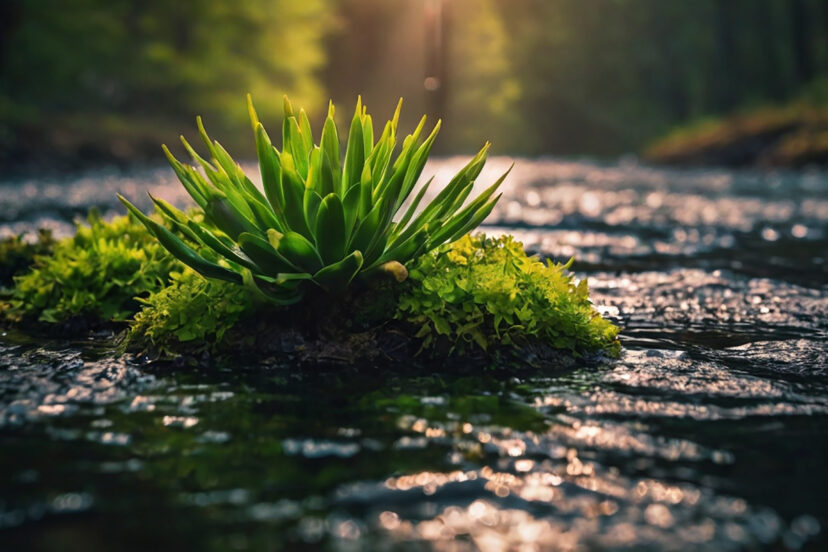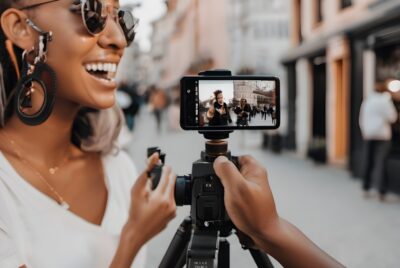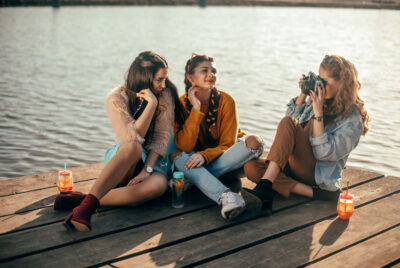Nature Photography: A Personal Guide to Capturing Wild Beauty
If you’re like me, you probably feel a certain pull when you see misty mountains, vibrant forests, or animals in their natural habitats. That’s why I fell in love with nature photography — and today, I’m here to share everything I’ve learned along the way so you can experience the magic too.
Why I Fell in Love with Nature Photography
It wasn’t just about the photos. It was about being there — standing alone under a glowing sunset or holding my breath while a fox wandered into my viewfinder. Nature photography connects you to the world in a way few other things can. And once you start noticing the little details — a dewdrop, a feather, a distant storm brewing — you’ll see the world differently forever.
>>> Today’s deals for cameras on Amazon CLICK HERE <<<
The Essential Gear for Nature Photography
You don’t need a trunk full of gear to start, but having the right tools makes your journey way smoother.
Choosing the Right Camera
When you’re out in the wild, durability matters. Weather-sealed DSLRs or mirrorless cameras like the Canon R6 or Nikon Z6 II are fantastic because they can handle a little rain or dust without giving up.
Lenses That Make a Difference
-
Wide-angle lenses (like a 16-35mm) are perfect for sweeping landscapes.
-
Telephoto lenses (like a 100-400mm) let you photograph wildlife without scaring them off. Always remember: better glass beats a better body almost every time.
Tripods and Accessories
A sturdy tripod isn’t optional if you want crisp shots in low light. Bonus: A remote shutter release prevents that slight blur caused by tapping the camera button. Oh, and don’t forget a waterproof bag for when the weather turns wild (because it will!).
Understanding Light in Nature Photography
If photography is painting with light, nature photography is painting with the most unpredictable palette you can imagine.
Golden Hour Magic
The hour after sunrise and before sunset is called the golden hour for a reason. The light is softer, colors are richer, and everything just looks more magical. Set your alarm early — it’s worth it!
Shooting in Different Weather Conditions
Foggy mornings? Rainy days? Bring it on! Some of my best shots happened when most people stayed indoors. Moody weather can add emotion and drama that bright sunshine simply can’t.
Finding the Perfect Locations
Where you shoot can be just as important as how you shoot.
Research and Planning
Use apps like PhotoPills or Google Earth to scout locations. National parks, wildlife reserves, and even local nature trails are goldmines if you’re willing to explore.
Hidden Gems vs Popular Spots
Sure, the iconic spots are beautiful. But some of my most memorable photos happened in places nobody else knew about. Don’t be afraid to wander off (safely, of course!).
The Art of Composition in Nature Photography
A great photo isn’t just about what’s in the frame — it’s about how you frame it.
Rule of Thirds
Imagine your photo divided into nine equal parts. Place key elements along those lines or where they intersect. It’s a simple trick that makes a huge difference.
Leading Lines and Framing
Use natural lines — like a river, a row of trees, or a hiking path — to lead the viewer’s eye deeper into your scene. Natural frames (like arching branches or rock formations) add an extra layer of depth.
Working with Wildlife: Patience and Respect
Nature photography isn’t just about pretty pictures — it’s about respecting the natural world.
Safety First
Always keep a safe distance from wildlife. Never corner an animal or approach young ones. Trust me, the zoom lens is your best friend here.
Ethical Photography Practices
Leave no trace. Don’t move plants or disturb nests for a “better shot.” Nature deserves to stay wild and untouched by our presence.
>>> Today’s deals for cameras on Amazon CLICK HERE <<<
Editing Your Nature Shots
Editing doesn’t mean making a fake version of nature — it’s about polishing what’s already beautiful.
Basic Adjustments
Adjust exposure, contrast, and white balance to bring out the best in your shot. A little sharpening can make textures pop beautifully.
Keeping It Natural
It’s tempting to crank up the saturation, but trust me — keeping colors realistic often feels more powerful in the long run. Let nature speak for itself.
Common Mistakes Beginners Make
-
Shooting at midday when the light is harsh and flat.
-
Forgetting to check your settings (auto ISO can wreck your detail).
-
Not being patient enough — sometimes you have to wait hours for that moment.
My Favorite Tips for Stunning Nature Photos
-
Always shoot in RAW. It captures more data for editing later.
-
Use a polarizing filter to cut glare and make skies pop.
-
Get low! Shooting from a lower angle makes landscapes feel grander and wildlife shots more intimate.
-
Keep extra batteries and memory cards — nature waits for no one.
-
Trust your gut. Some of my best shots happened when I followed a “hunch” and kept walking.
Conclusion: Nature Through Your Own Eyes
At the end of the day, nature photography isn’t just about technique — it’s about connection. It’s about standing in awe under a starry sky or marveling at a tiny insect’s wings.
Your camera becomes a bridge between your heart and the world. So grab your gear, lace up your boots, and get out there — the wild is waiting, and it’s got stories only you can tell.
>>> Today’s deals for cameras on Amazon CLICK HERE <<<
FAQs
Q1. What is the best beginner camera for nature photography?
Look for weather-sealed cameras with good autofocus, like the Canon EOS 90D or the Sony a6400.
Q2. How do I photograph animals without scaring them away?
Use a telephoto lens, move slowly, and avoid making sudden noises. Patience is key!
Q3. What’s the best time of year for nature photography?
Every season offers something unique! Fall colors, spring blossoms, winter snow — there’s beauty year-round.
Q4. Should I use manual mode for nature photography?
Manual mode gives you the most control, but aperture priority mode is a great middle ground for beginners.
Q5. How do I protect my camera in bad weather?
Use a rain cover or even a ziplock bag in a pinch. Also, bring a microfiber cloth to wipe off any moisture quickly.
Further reading
Check out our other relevant articles:
.




